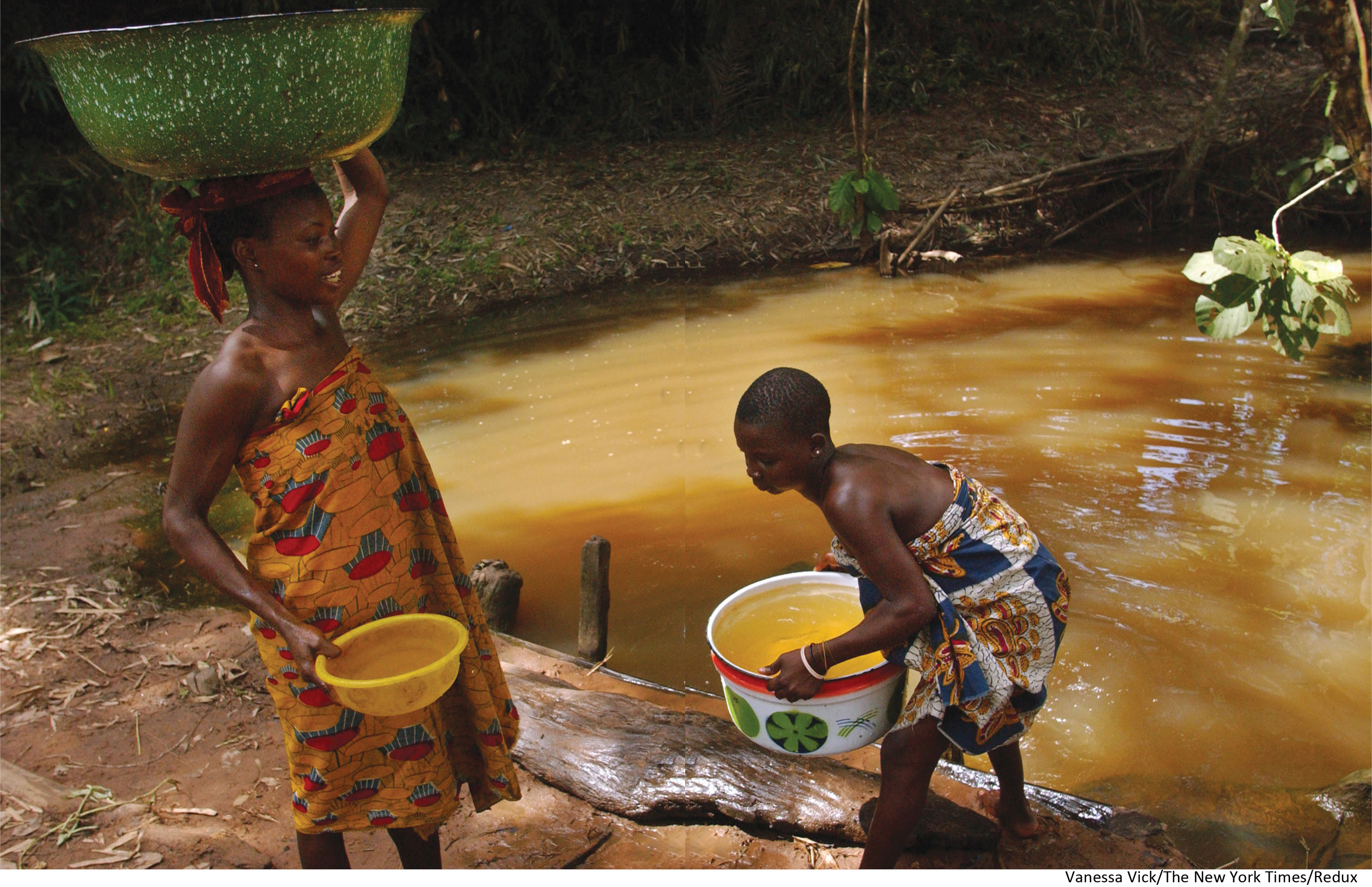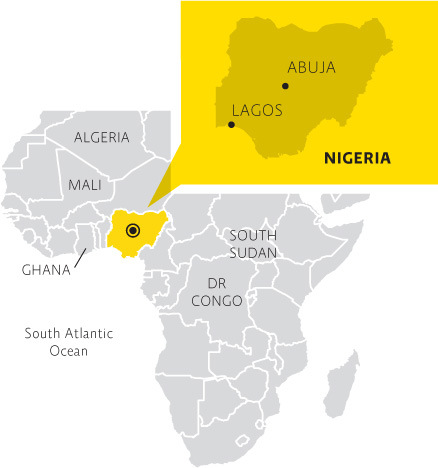Chapter Introduction
80
CHAPTER 5
ENVIRONMENTAL HEALTH
ERADICATING A PARASITIC NIGHTMARE
Human health is intricately linked to the environment

CORE MESSAGE
Human health is impacted by the environment. Our choices can alter the environment to either facilitate disease or to reduce its transmission. Infectious diseases are the leading cause of death in less developed nations, while water contamination, land and waterway alteration, deforestation, and climate change are contributing to these and other health problems. Health can be improved significantly with better sanitation, access to clean air and water, and public health programs that reach people in affected areas.
AFTER READING THIS CHAPTER, YOU SHOULD BE ABLE TO ANsWER THE FOLLOWING GUIDING QUESTIONS
1 What types of environmental hazards impact the health of people?
2 How do the fields of public health and environmental health help improve the health of human populations? What environmental factors contribute to the global burden of disease?
81
3 What types of pathogens cause disease? Specifically, what factors facilitate the spread of Guinea worm disease, and what steps are needed to eradicate it?
4 How do factors that affect human health differ between more and less developed nations?
5 What can be done to reduce environmentally mediated health problems? How close are we to eradicating GWD?
82
Ernesto Ruiz-Tiben shook the tube of water and held it up to the sunlight so that the women who were gathered around him could see the tiny black flecks that had settled out. There was a soft, collective gasp at the spectacle. The black flecks—tiny water fleas known as copepods—offered the Nigerian women the first visible proof of what Ruiz-Tiben, director of the Carter Center’s Guinea Worm Eradication Program, had been trying to explain to them: The water they drank and bathed in was contaminated with tiny bugs, and these bugs were solely responsible for the searing worm infections that seemed to sweep through the village every year or so, usually right around harvest time.
For those unlucky villagers, the infection began when a person ingested contaminated water that contained copepods infected with Guinea worm larvae. Once digested, the copepods released the larvae, which burrowed into the victim’s abdominal tissue. There the larvae matured into adult males and females who then mated. The males died, but the females continued to grow—up to 100 centimeters (3 feet) long—all the while migrating through the victim’s tissue. About a year after infection, the full-grown females forced their way out by releasing acid just beneath the skin, which in turn created a blister. When the fiery pain of that blister drove the victim to plunge into water, the female squirted out a dense cloud of milky white larvae, starting the cycle over again.
KEY CONCEPT 5.1
Water- and vector-borne infectious diseases threaten many human populations. Human actions that increase habitat for pathogens or their vectors can facilitate the spread of these diseases.
The disease is not fatal, but recovery is both very slow and very debilitating. Even after she releases her larvae, the mother worm can take as long as 3 months to fully emerge from the skin, during which time the victim is often completely laid up—unable to work for the entire harvest—or even to walk or move much, depending on which limbs are infected and with how many worms. Worse yet, there are no medications or vaccines for dracunculiasis, or Guinea worm disease (GWD) as it is more commonly known, and the infection itself does not confer immunity; that means the same people can fall prey to the worms over and over again.
Efforts to reduce the incidence of GWD began as part of an international program to provide safe drinking water to all people. According to the World Health Organization (WHO), some 1 billion people per year fall victim to waterborne diseases—those acquired by consuming contaminated water. In fact, water- and vector-borne diseases are the main infectious disease threats to human health. (Vectors are organisms that transmit a pathogen from one host to another; in the case of GWD, copepods serve as the vector.) GWD is just one of countless such diseases, but in the course of eliminating it, Ruiz-Tiben and his colleagues hoped that they might also eliminate others.
waterborne disease
An infectious disease acquired through contact with contaminated water.
vector-borne disease
An infectious disease acquired from organisms that transmit a pathogen from one host to another.
infectious disease
An illness caused by an invading pathogen such as a bacterium or virus.
pathogen
An infectious agent that causes illness or disease.

83
